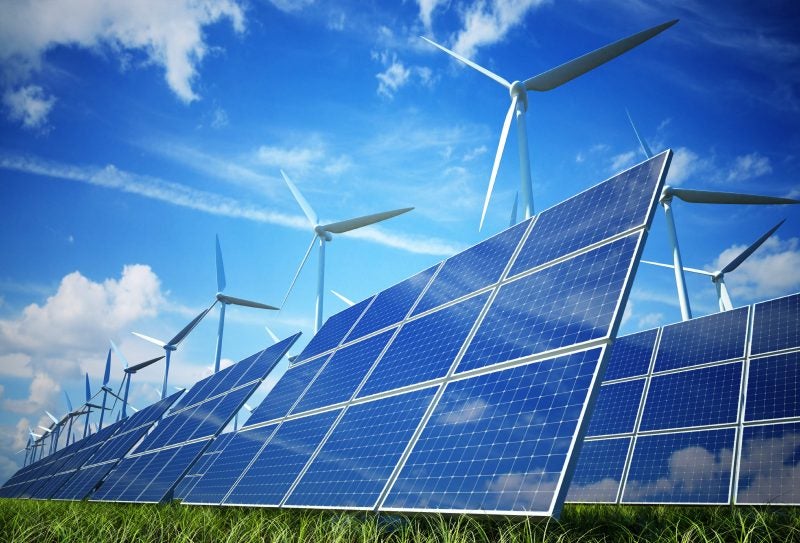The composition of Pakistan’s energy mix
According to US government statistics, Pakistan’s energy mix consists of 64% fossil fuels, 27% hydropower and 9% other renewables and nuclear energy.
Although Pakistan has great potential for renewable energy production, the country still lags far behind much of the world in developing these resources.
How is Pakistan’s energy mix developing in a country where over 50 million people still do not have adequate access to electricity?
Chinese financing trap
Pakistan has benefited from the China-Pakistan Economic Corridor (CPEC), a multi-billion dollar deal that is part of China’s Belt and Road initiative to finance infrastructure projects across Asia.
The projects funded by the CPEC include the 720 MW Karot hydro project in the disputed Kashmir region. The $1.4 billion project was launched in December 2016 and is due to be completed in December 2021.
However, this initiative has been criticised in Pakistan. The CPEC is said to have contributed to corruption in the country, with the value of the scheme increasing from $46 billion to $62 billion. It has also been accused of tying countries to China through debt via expensive projects.
For this reason, Pakistan has taken cautious steps to distance itself from the CPEC due to the suspicions of the current ruling party Tehreek-e-Insaf. A cabinet minister even stated that the CPEC brought “little benefit” to the Pakistanis.
Fossil Fuels Pakistan
Fossil fuels continue to dominate Pakistan’s energy mix. Recent examples of fossil fuel projects in the country include the China Power Hub Generation Company’s (CPHGC) 1,320 MW coal-fired power plant in the country’s Balochistan region, which is set to be connected to Pakistan’s grid by the end of 2019.
Pakistan also has domestic natural gas resources, which produced nearly 37 million cubic feet in 2018. Of this, 43% is used in the energy sector, which powers power plants such as the Balloki power plant outside Lahore. Natural gas accounts for 40% of Pakistan’s energy needs.
Nuclear energy in Pakistan
Nuclear energy has been used in Pakistan since the establishment of the Pakistan Atomic Energy Committee in 1955. The first nuclear power plant, Kanupp 1, was completed in 1971.
Pakistan currently has five reactors with a total capacity of just over 1.3 GW, but there are plans to expand this. Since 2013, Pakistan has been pushing for an additional 2.2 GW of nuclear power with two new reactors in the city of Karachi. The reactors were built with Chinese assistance and are estimated to cost $5 billion.
A renewable future?
Renewable energy is developing slowly in Pakistan and currently represents only 4% of the energy mix.
However, under the current government of Prime Minister Imran Khan, plans to increase the country’s renewable capacity have accelerated.
In April 2019, it was announced that Pakistan aims to generate 30% of its energy capacity from renewable sources, such as wind, solar and biomass, by 2030. It is estimated that Pakistan could produce 340 GW of wind energy alone.
This plan will coincide with a slight increase in hydropower to 30% of Pakistan’s energy mix. According to the International Hydropower Association, Pakistan has the potential to produce 60,000 MW of hydropower, but currently produces just over 7,000 MW.
The country’s largest hydroelectric power plant is the Tarbela Dam project in the north of the country. With a capacity of over 4,000 MW, the power plant has been in operation since 1984 and has cost almost $1.5 billion.
Pakistan has been slow to adopt renewable energy, but has made belated moves to expand its wind and solar capacity, in addition to ramping up its nuclear capacity. However, the fossil fuel sector still leads the way in Pakistan.
“What does Pakistan’s energy mix look like and what is its future?” was originally created and published by Energy technologya brand of GlobalData.
The information on this site is included in good faith for general information purposes only. It is not intended to amount to advice on which you should rely and we make no representation, warranty or guarantee, express or implied, as to its accuracy or completeness. You must obtain professional or specialist advice before taking, or refraining from, any action on the basis of the content on our site.







